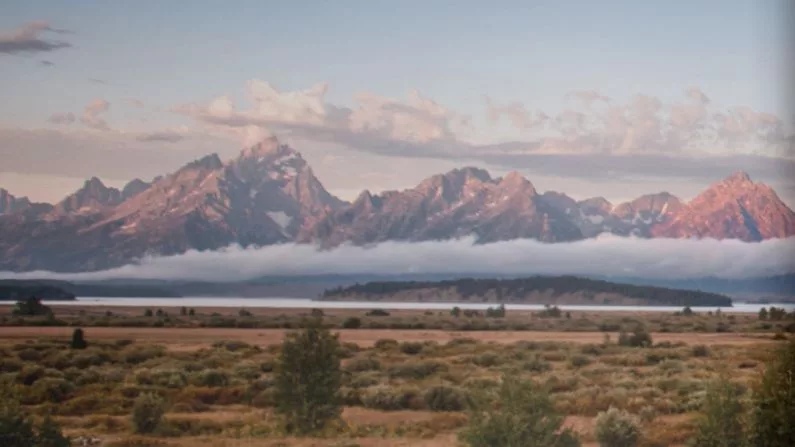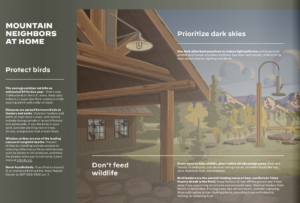A mountain stream runs through Nolan O’Neal’s backyard in the small community of Shell, Wyoming. The Bighorn Mountains rise in the distance.
It’s natural resources like these that he, and other area landowners, want to protect.
That group in North-Central Wyoming is following Teton County’s lead and creating a local’s guide to environmental stewardship. Other communities, from Missoula, Montana to Truckee, California, are also embarking on similar endeavors.
“This has been done right [in Teton County],” O’Neal said. “So, we were motivated to do the same thing.”
The Mountain Neighbor Handbook
Last year, the Teton Conservation District and dozens of other environmental stakeholders in the region created “The Mountain Neighbor Handbook: A Local’s Guide to Stewardship in the Tetons.”
This came after more people moved to Teton County and other rural communities amid the COVID-19 pandemic, raising flags about potential environmental impacts.
According to Carlin Girard, executive director of Teton Conservation District, some of the loudest voices have been from long-term residents.
“In the last couple of years, in particular, we have heard resoundingly a concern from those residents regarding new residents coming in — how they are changing the landscape and changing the community,” Girard explained in an early March national presentation through the National Park Service.
He said new homeowners may not know the best ways to treat the land. This can include wildfire mitigation, wastewater management and landscaping practices, as well as how to live with the local wildlife.
So, the Teton County partner organizations are giving new residents a copy of the handbook when they arrive.
“This community is going to be changing — it is changing,” Girard said in an October interview with KHOL. “Instead of complaining about it, being cynical, we’re trying to take a positive attitude, put this desired end point out in the future and try to engage as many community members as we can.”
A model for rural communities
Teton Conservation District said it’s been fielding calls left and right about the handbook. Girard said the organization has spoken with a dozen communities nationwide that may use it as a blueprint to create their own.
That, of course, includes Big Horn County, where O’Neal said he and others have already garnered the support of county commissioners and the local conservation districts.
O’Neal said the group — called the Big Horn County Citizens for Economic Development — learned from Teton County’s efforts that ensuring “buy in” from stakeholders should be the first step toward creating such a guide.
And that hasn’t been a problem, O’Neal said.
“Really as soon as we show this to most people in the area, they get it instantly,” he said.
The community group had already started distributing informational materials to new neighbors during the pandemic.
“Seeing people move in … they’re very forward leaning, they’re proactive, they want to do things for their property to be in good shape,” O’Neal said. “We started building that list [of environmental resources] and realized new landowners have a very steep learning curve on all the things that matter.”
“So that’s what got us going, was ‘how do we help people?’” O’Neal added.
Big Horn County’s version of the Mountain Neighbor Handbook will be a more formalized version of those early “fledgling” efforts, O’Neal said.
The group is currently acquiring written information from local environmental groups, exploring topics such as what to do with artifacts found on public land, how to live with wildlife and how to protect the local watershed.
O’Neal expects to release the guide next year, also connecting new residents with local outdoor recreation groups.
“[They’re doing] a really good job of helping people enjoy everything we’ve got,” O’Neal said. “But doing it in a way where it’s still going to be here in 100 years.”
A digital copy of Teton County’s handbook is available on the Teton Conservation District’s website, and hard copies can be found in their Jackson office.








